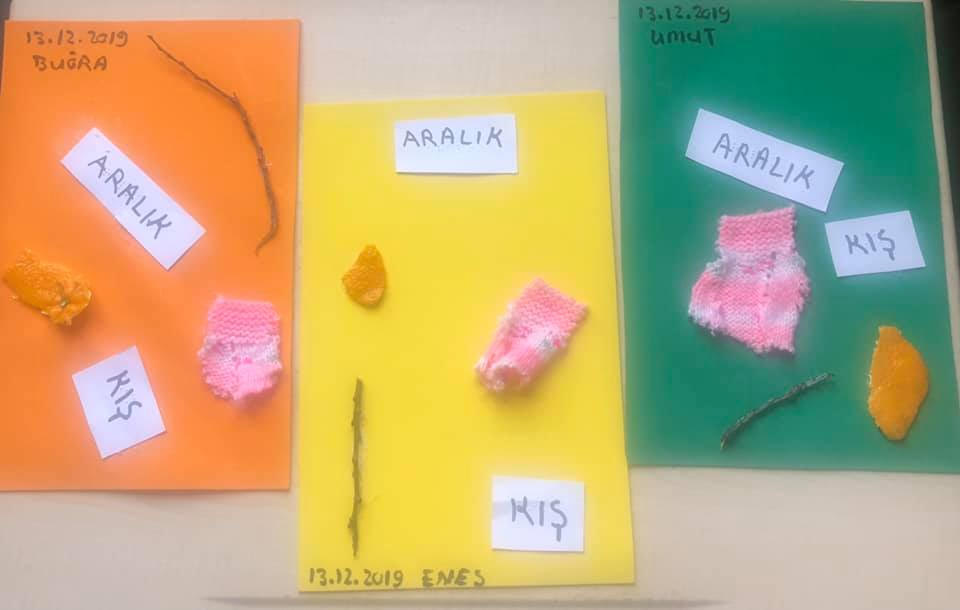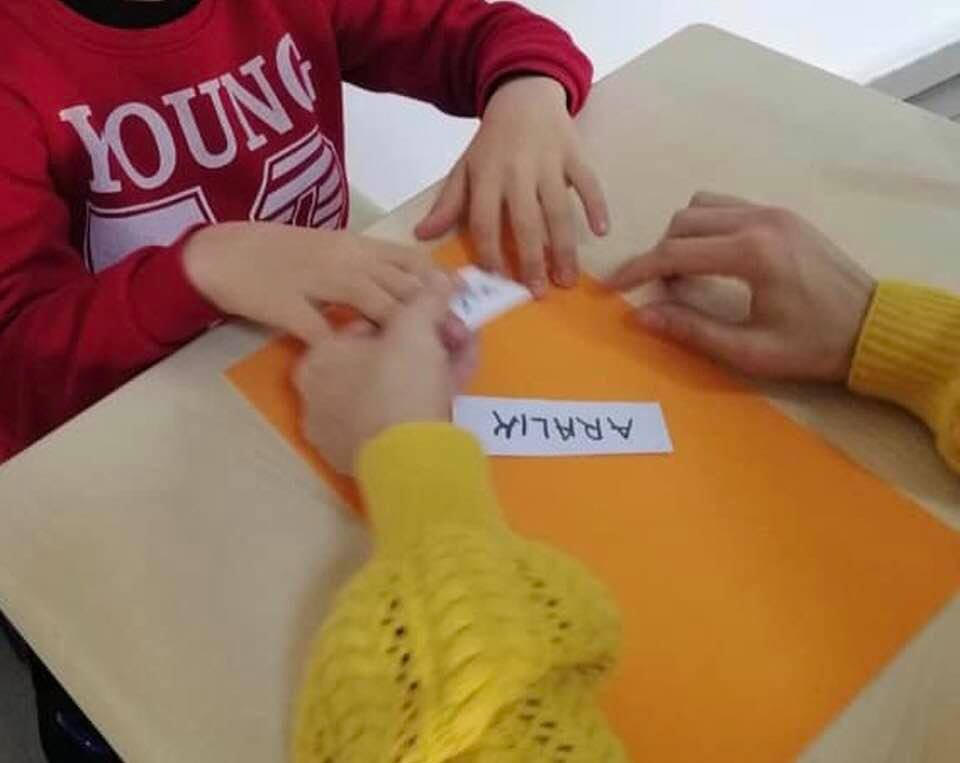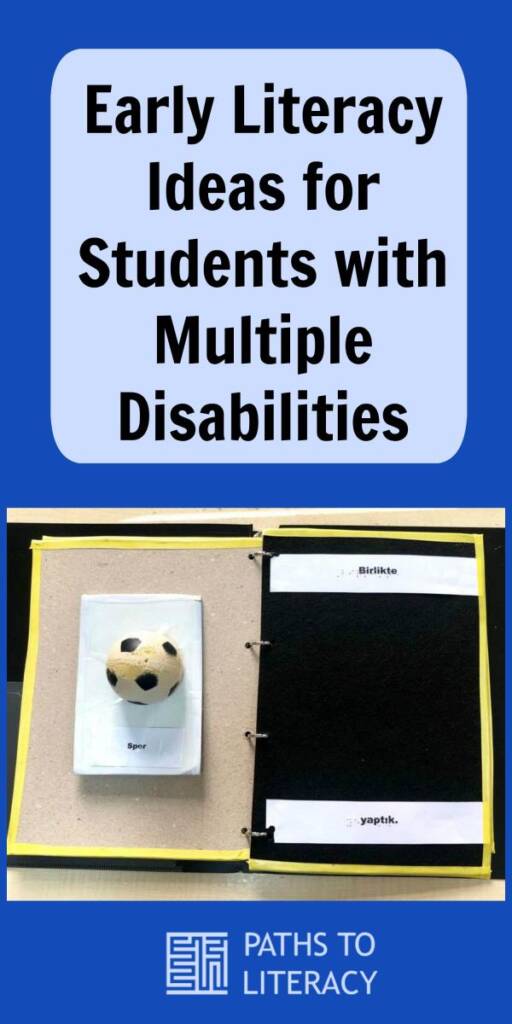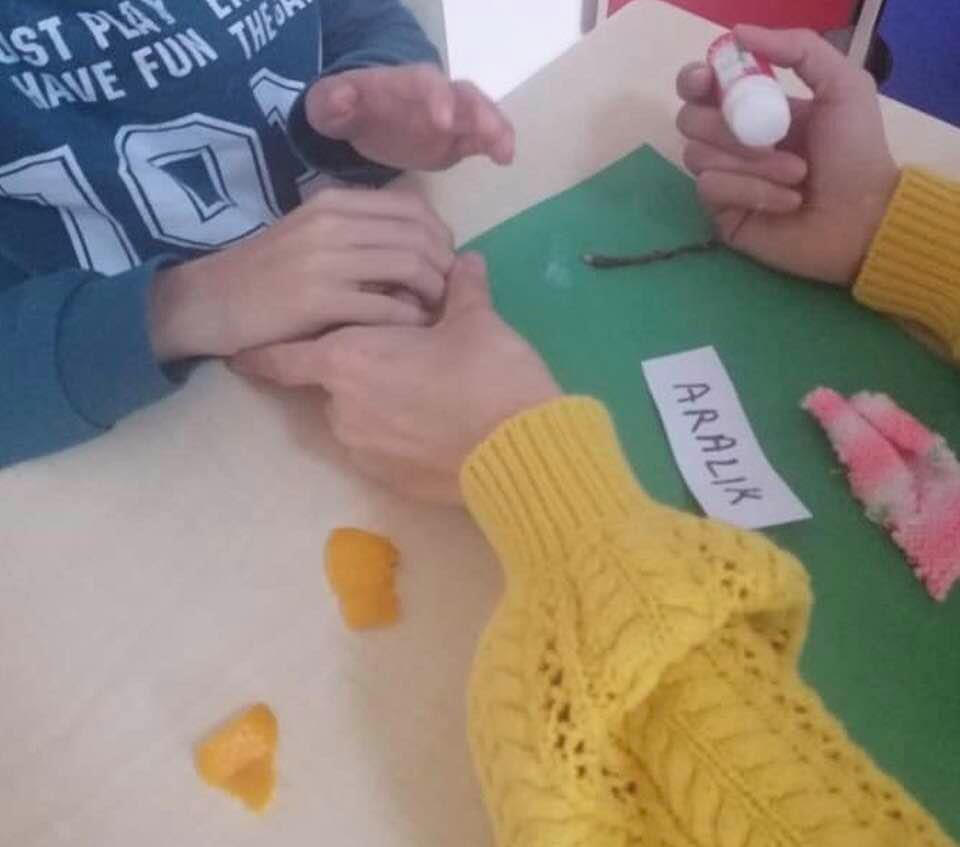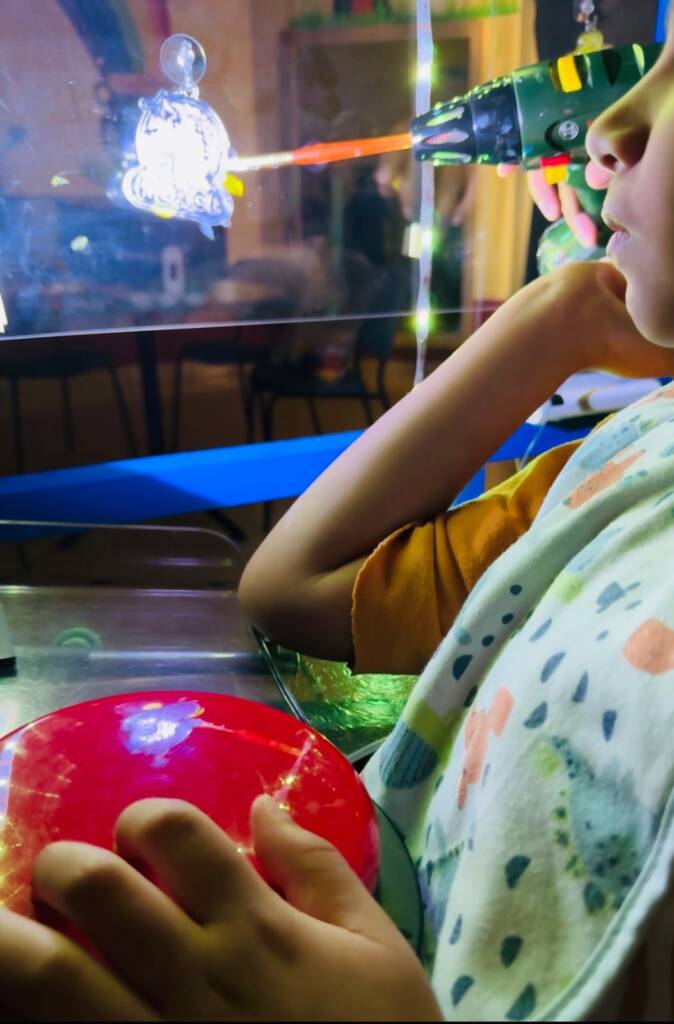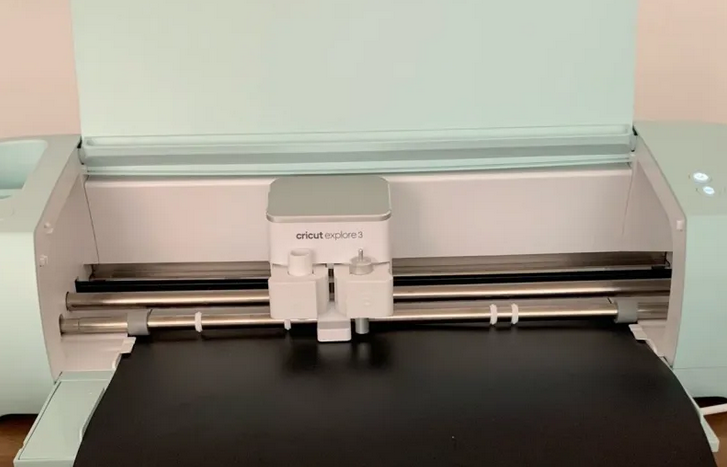I am a teacher at a school for the blind in Turkey and all of the students in my classroom have multiple disabilities (MDVI). They are between 12 and 15 years old, and all of them have challenges with communication, which has led to behavior issues. I spent a year in the Educational Leadership Program at Perkins School for the Blind, where I learned many strategies that I am now trying with my students. At first the other teachers in the school doubted that these methods with work, but now many of them are using the same materials and ideas with their students too. I have seen real improvements already in just a few months!
Using Tactile Symbols Throughout the Day
Because the students are non-verbal or are just beginning to speak, I started by setting up a tactile symbol system for them. They can use the symbols to request something or to anticipate what activity will happen next. Whenever possible I tried to select objects that are part of an actual activity, such as bells for music or the top of a soap dispenser for going to the toilet. The objects or partial objects are mounted on cardboard, with a solid white background. Each card is labeled with print and braille, in addition to the object symbol. After a very short time the students have learned to associate these object symbols with activities throughout the day.
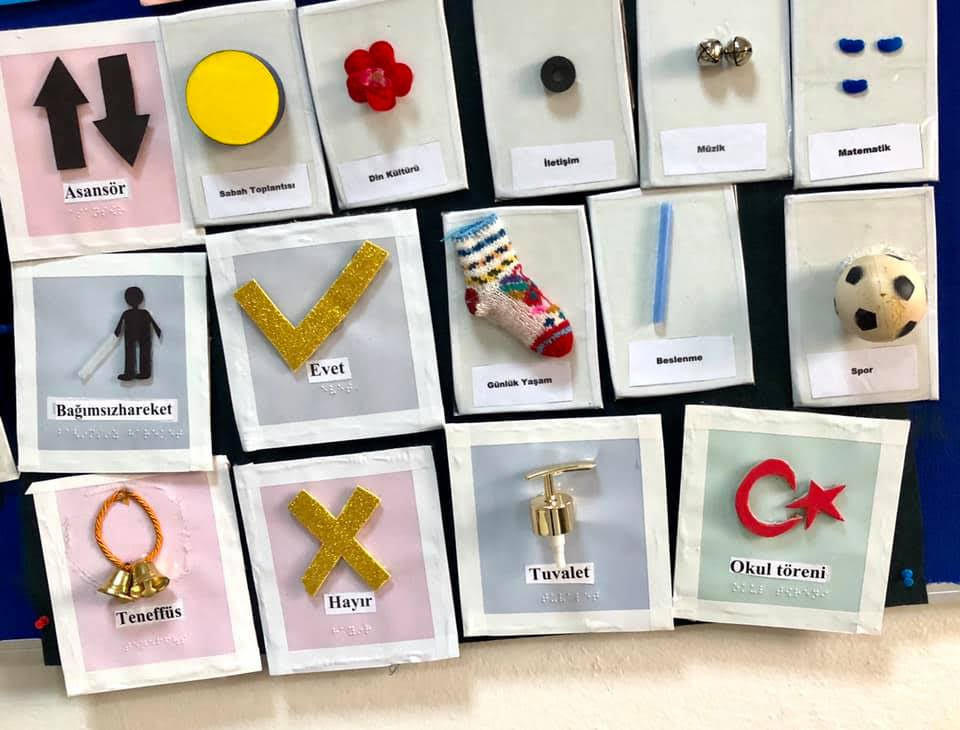
Name Symbols
In addition to setting up tactile symbols for routine activities, we also have tacile symbol cards for each person. I observed each child, as well as the teachers, to see what was distinctive about them, so that I could choose a symbol that is associated with them. Sometimes this was easy. For example, Esra wears glasses, so having a pair of glasses became her symbol. Another girl, Sara, always wears a beaded bracelet, so that became her name symbol. We use these name symbols to label each person’s chair or desk, as well as their shelf and locker. We also use the symbols when we write stories.
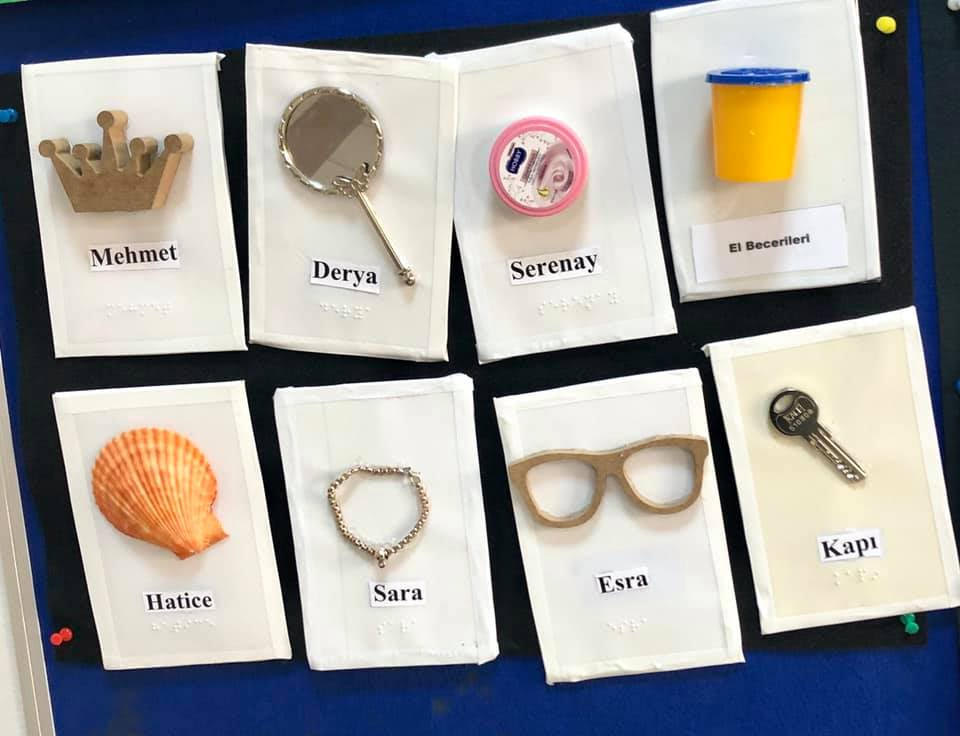
Establishing Predictable Routines
Every day when the students come into the classroom, the first thing they do is to review their schedule, which is a tactile calendar system. We then have morning meeting to talk about the events of the day, the weather, and who is here that day.
Setting Up Daily Calendars with Tactile Symbols
Each student has an individual calendar to let him or her know what activities will take place on any given day. These are kept in a predictable place, so that the student can locate their schedule and consult it throughout the day. Once an activity has been completed, they place the symbol card into a “finished” box to indicate that they are done. The example below shows a spoon for eating, a Lego for games, toilet paper for toilet, and a piece of fabric similar to her mother’s bag for “mom” or going home.
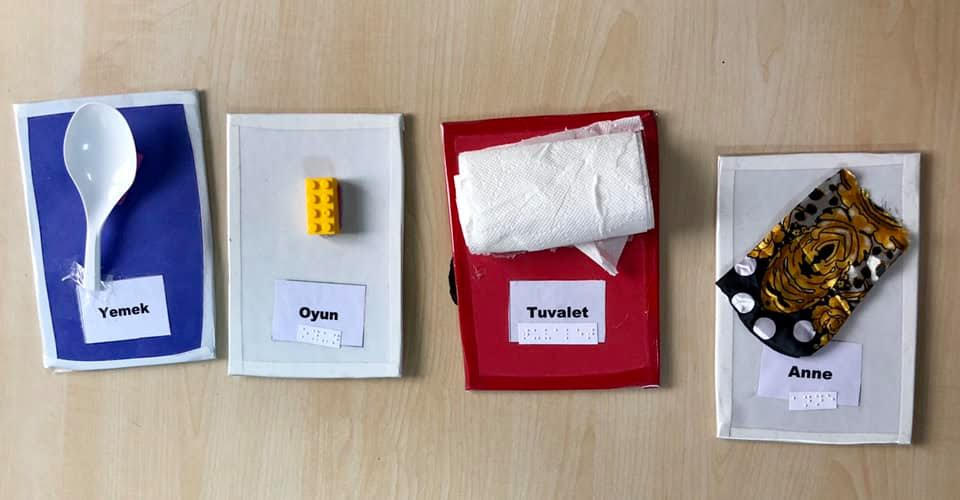
Labeling the Environment with Tactile Symbols
We use the tactile and photo symbols to label various locations in the environment. For example, in the photo below we label the lockers where students keep their backpacks. In the photo on the right, we label the craft area with a gluestick. Having these places labeled promotes independence among the students and they are now able to go to a given location for an activity.
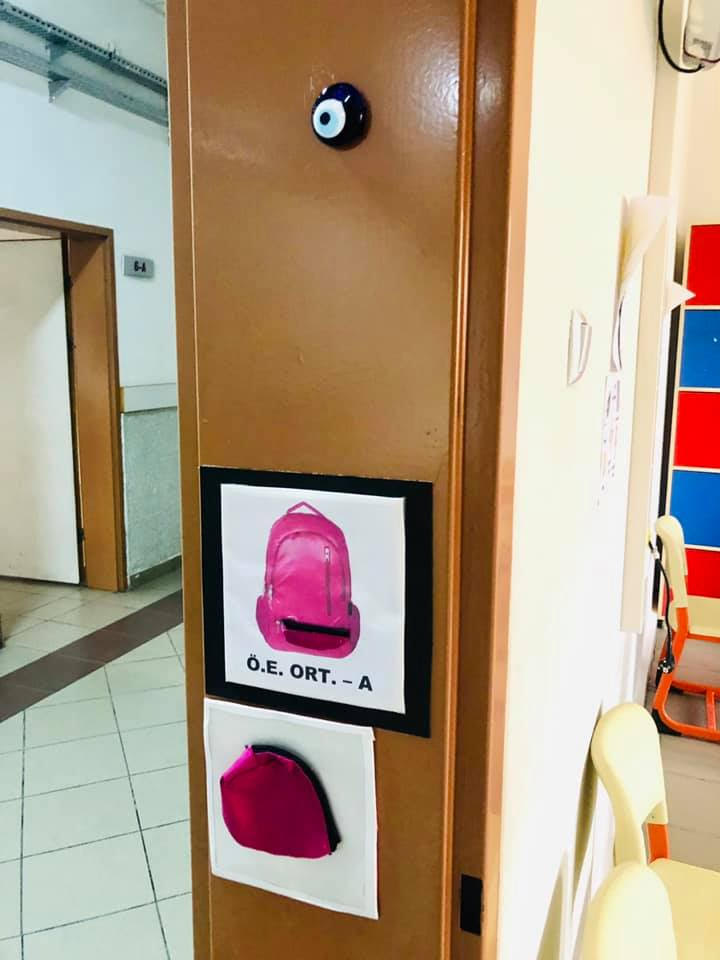
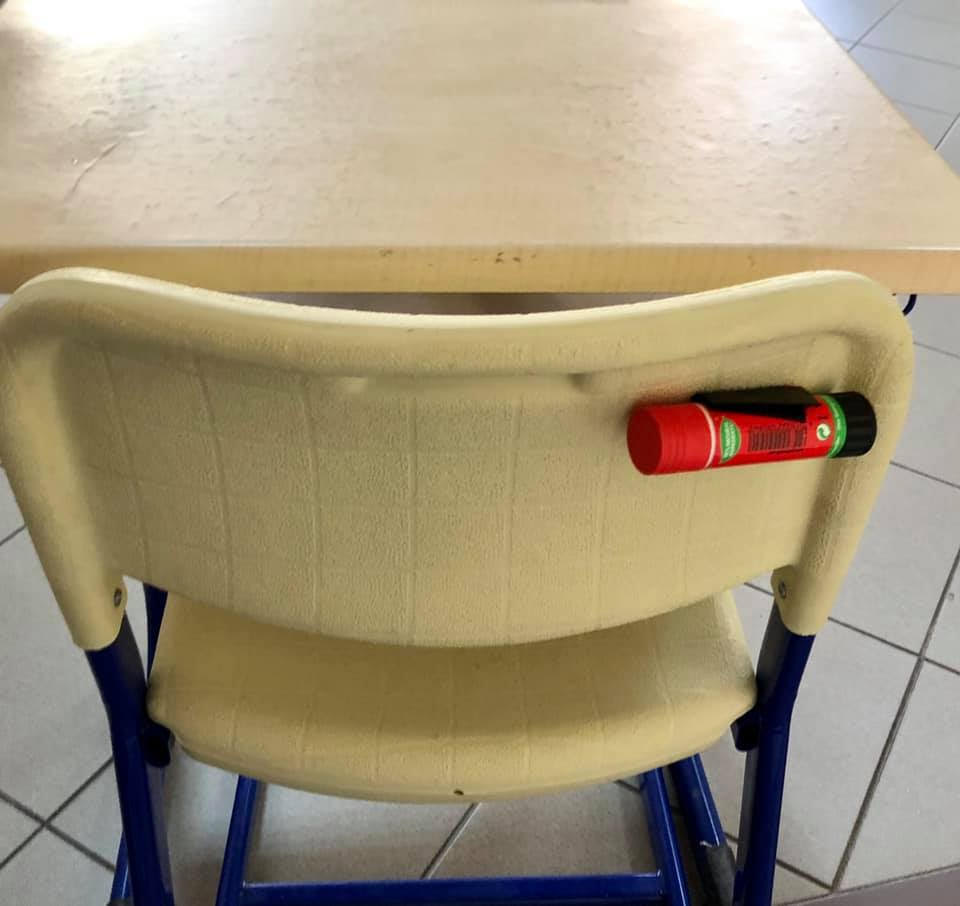
Each student’s chair is also labeled with his or her own tactile symbol. Again, having a predictable location and system enables students to be more independent.
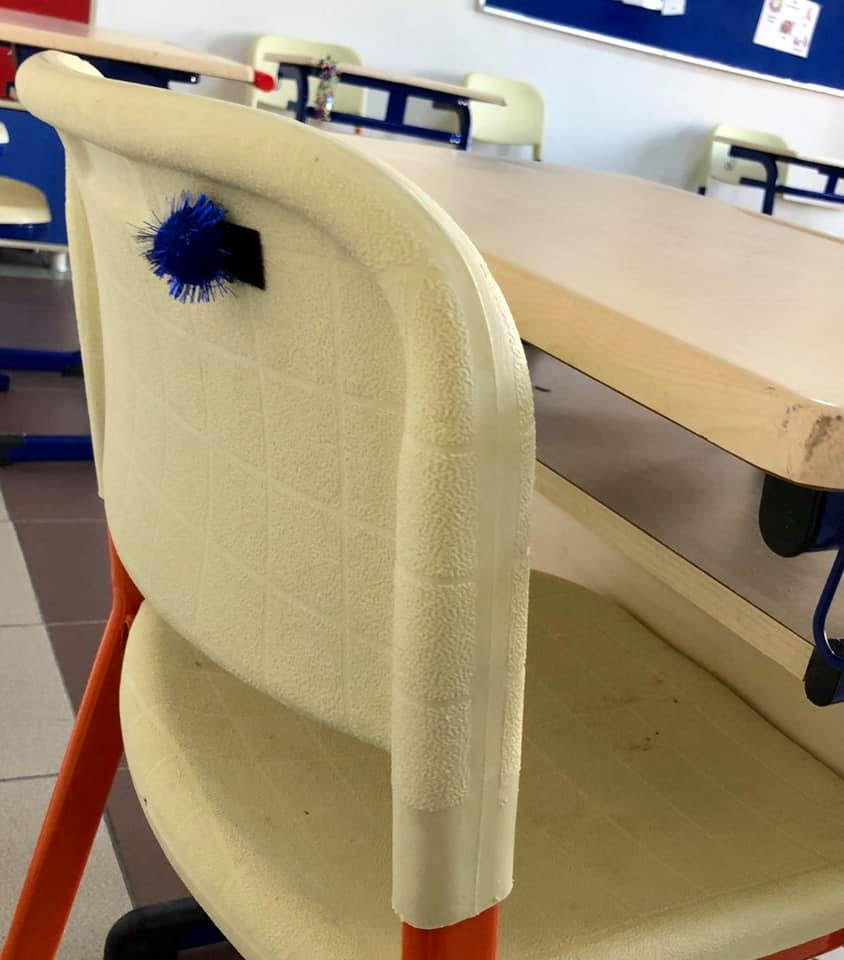
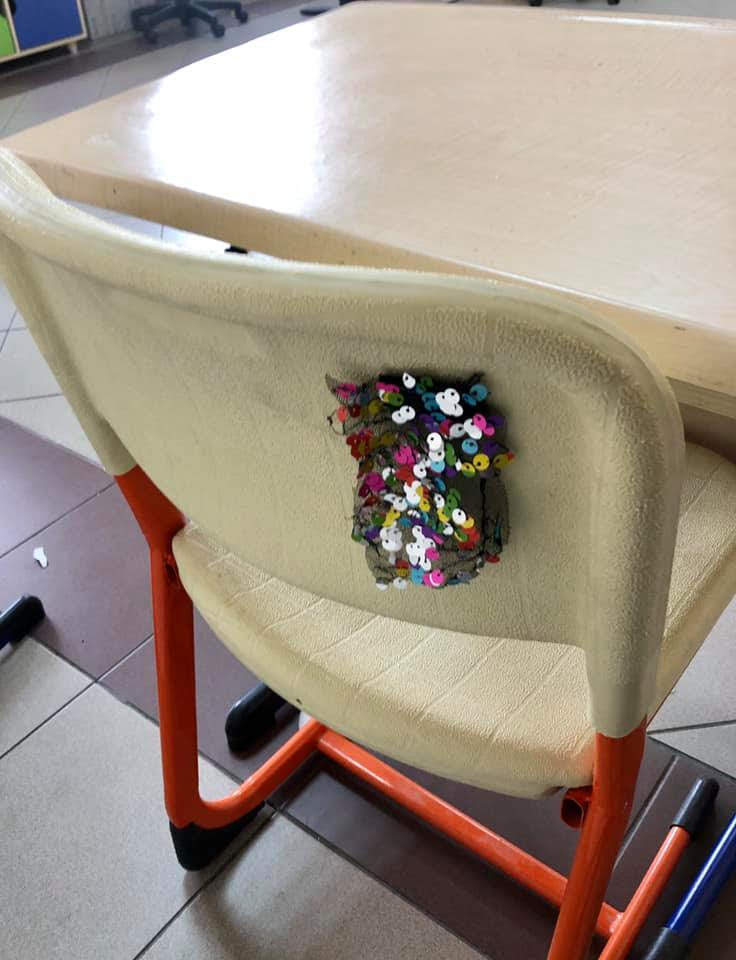
Creating Tactile Books About Real Experiences
In the past these students had not been included in literacy activities, as it was believed that they were not able to learn braille. By using real objects and tactile symbols, paired with print and braille, we have started to create simple books about familiar objects and events.
Book about Morning Routine
Velcro is placed on the back of each item, so that as the book is read the child can find the named item and place it on the page. In these examples we use a comb, a bar of soap, and toothpaste in a book about the morning routine.
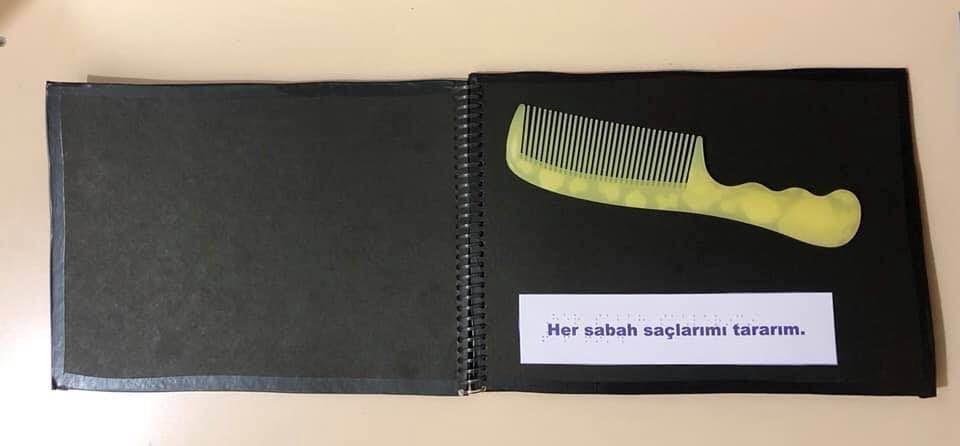
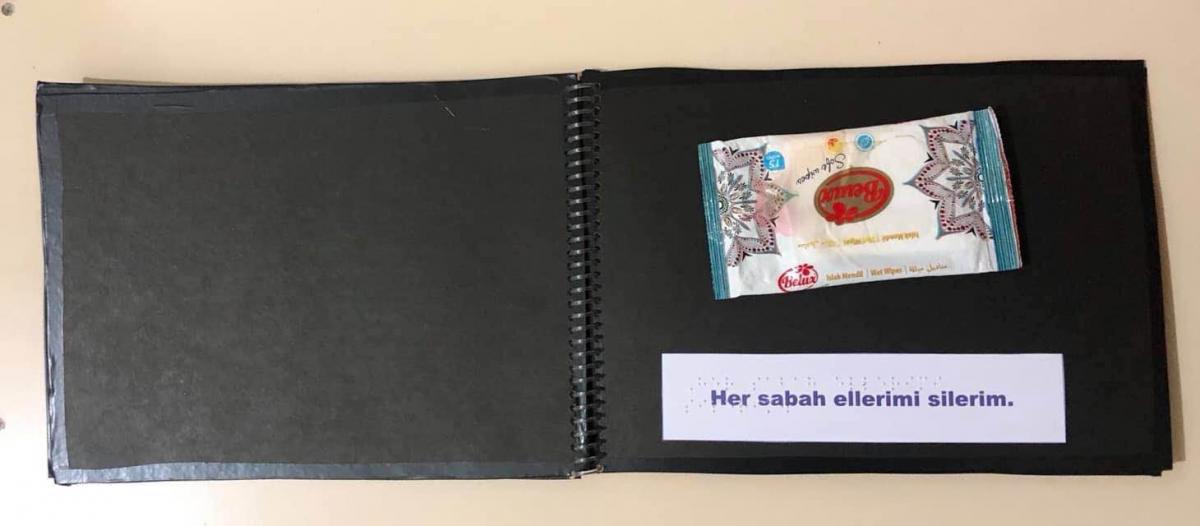
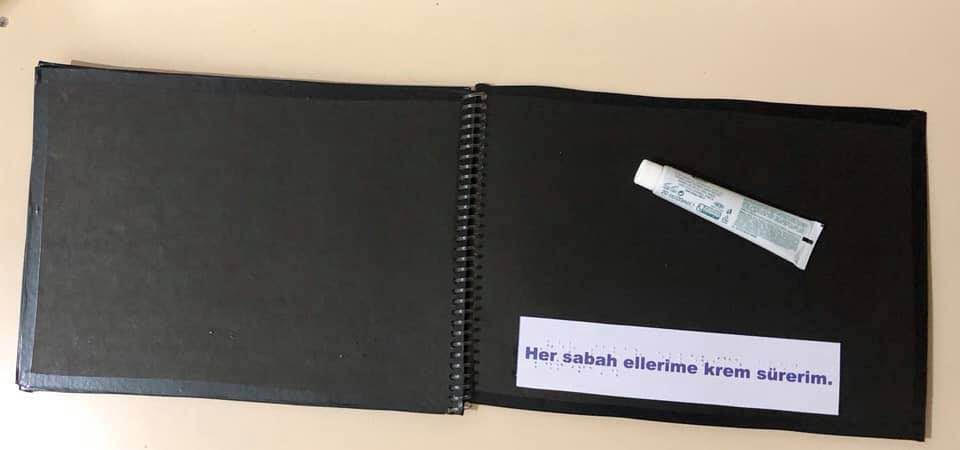
Tactile Book About the Day
In this interactive book we also have Velcro on the back of each item, so that the students can find the symbol to fill in the book.
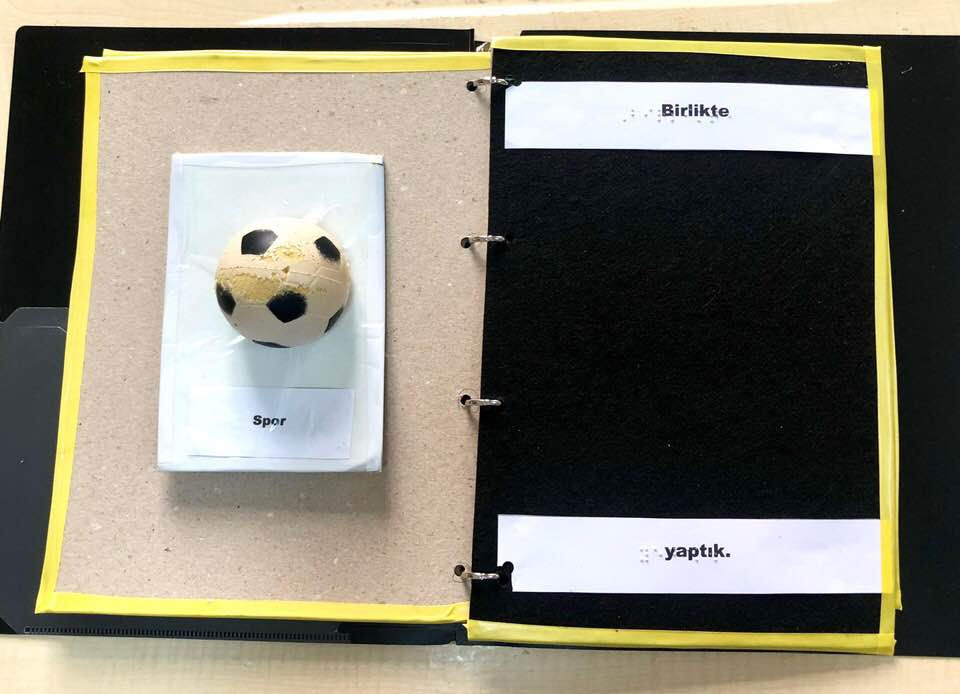
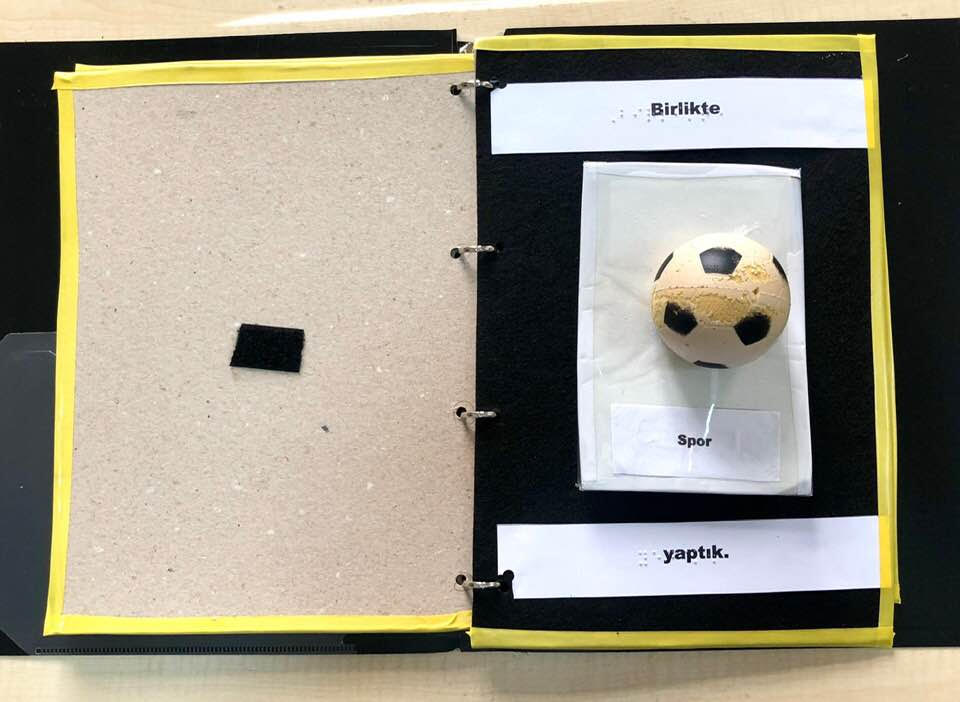
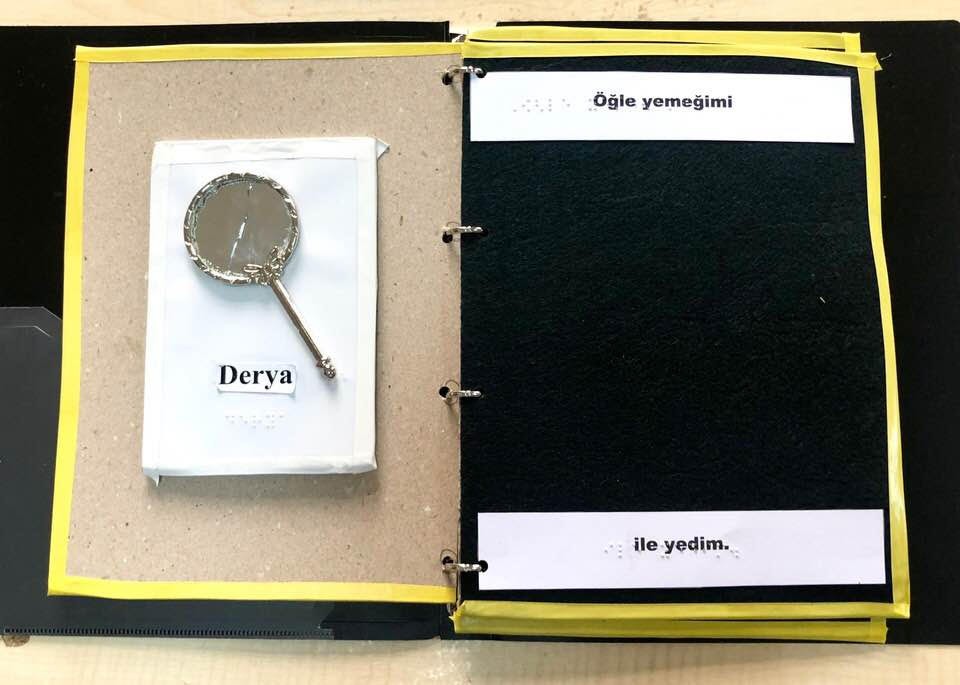
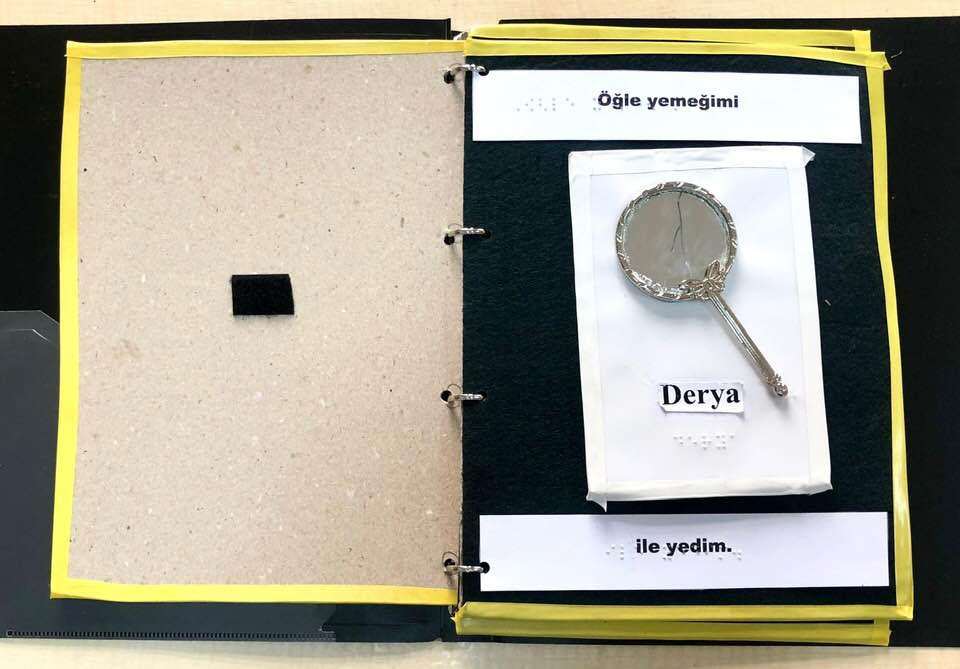
Books About Seasons
We just finished making a book about winter, with real objects related to winter attached to each page. We wrote sentences about winter in print and braille.
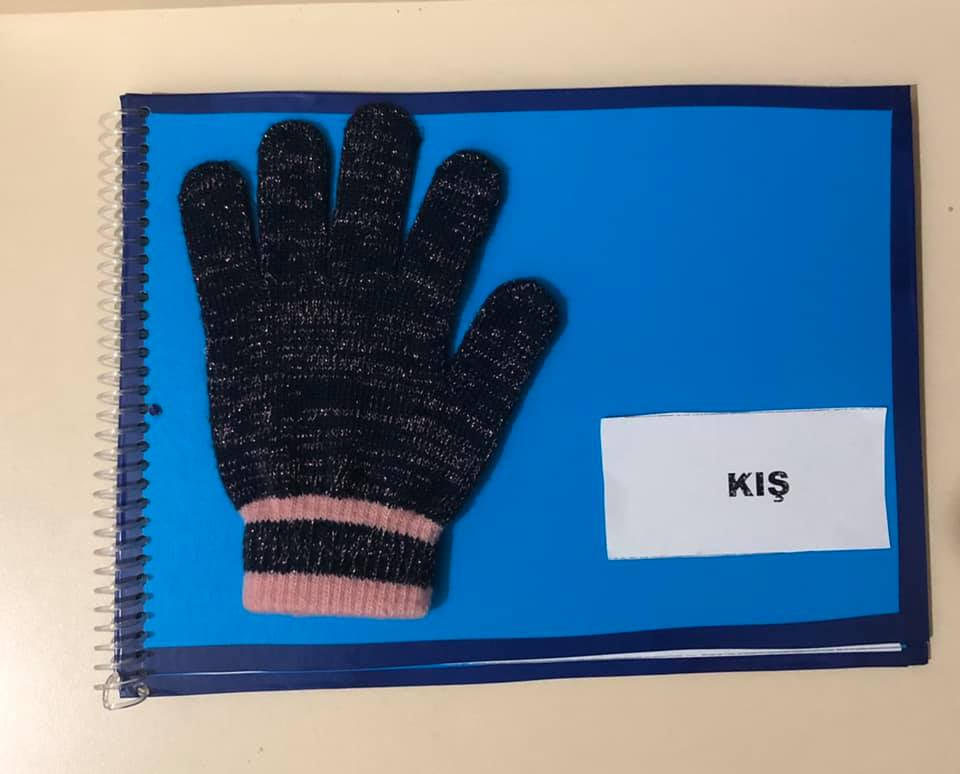
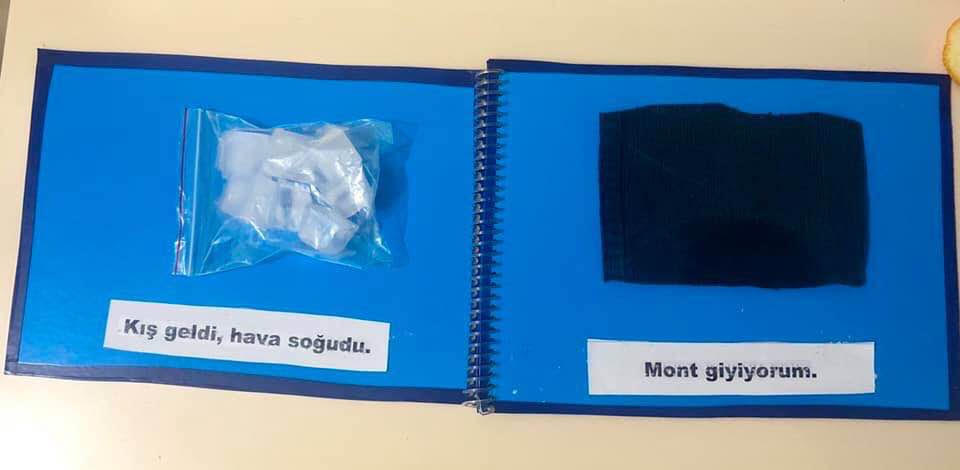
Every week we made new pages for the book and each student made his or her own page. The examples below show a piece of a sweater, an orange, and a stick for the month of December.
